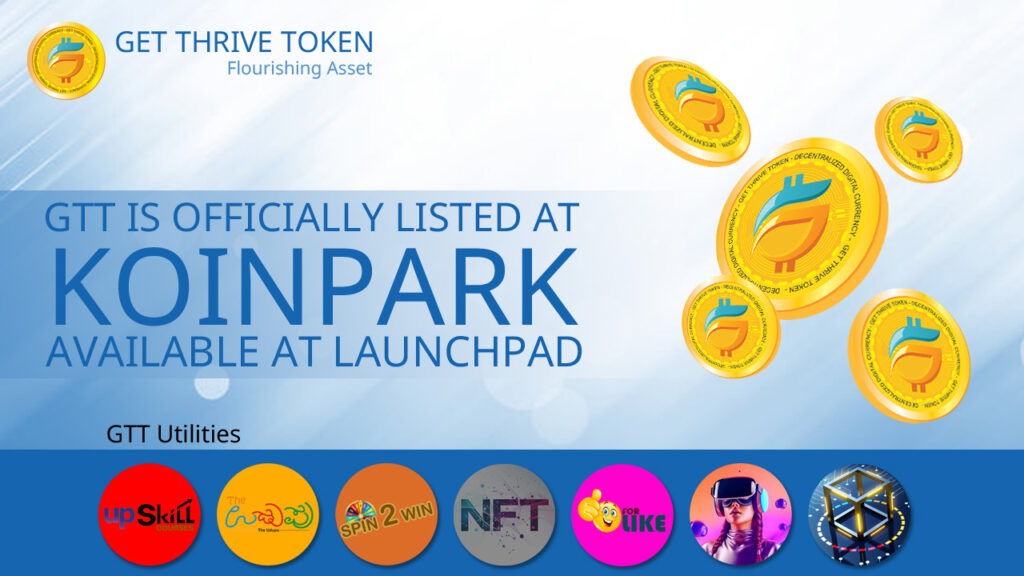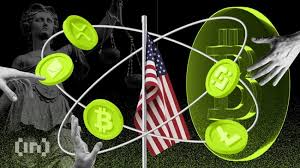Non-fungible tokens (NFTs) exploded into the mainstream in 2021, captivating the art world, gaming communities, and the broader crypto space. As the first wave of NFT-related projects swept through digital markets, many began to question whether these digital assets were a passing fad or a groundbreaking innovation with long-term potential. NFTs are unique digital assets stored on a blockchain, often used to represent ownership of digital or physical items like artwork, music, and collectibles. While NFTs are often associated with art sales and high-profile auctions, their use cases extend far beyond the creative sector. This blog explores the role of NFTs in the broader crypto ecosystem, examining their potential benefits, challenges, and the lasting impact they could have on the world of digital ownership.
Understanding NFTs: More Than Just Digital Art
NFTs are a type of cryptocurrency token that represents a unique asset. Unlike Bitcoin or Ethereum, which are fungible and can be exchanged one-to-one, NFTs are indivisible and cannot be exchanged for one another on a like-for-like basis. This uniqueness is what makes NFTs valuable, as they represent one-of-a-kind items or experiences in the digital or physical world.
- How NFTs Work:
- Blockchain Technology: Most NFTs are built on Ethereum, a decentralized blockchain platform that supports smart contracts. NFTs are minted (created) using Ethereum’s ERC-721 standard, which ensures that each token is unique and verifiable.
- Metadata and Provenance: The metadata associated with NFTs contains essential details about the asset, such as the creator’s name, the item’s history, and the ownership trail. This traceable chain of ownership adds authenticity and value to the NFT.
- Ownership and Transferability: When someone buys an NFT, they acquire digital ownership of the asset. This ownership is verified and recorded on the blockchain, ensuring that it cannot be duplicated or counterfeited. NFTs can be traded or resold on various NFT marketplaces, such as OpenSea or Rarible.
- Popular NFT Use Cases:
- Art: NFTs have taken the art world by storm, providing digital artists with a new way to sell and monetize their work. The sale of digital art as NFTs allows creators to retain control over their intellectual property and receive royalties each time the NFT is resold.
- Music and Entertainment: Musicians and content creators are using NFTs to offer exclusive access to music, tickets, merchandise, and special experiences. Artists can sell their music as NFTs, bypassing traditional music distribution platforms and directly engaging with their fanbase.
- Gaming and Virtual Goods: NFTs have also made waves in the gaming industry. In-game assets such as skins, weapons, and characters can be tokenized as NFTs, allowing players to buy, sell, and trade these items across different games and platforms.
- Collectibles: NFTs have given rise to a new category of digital collectibles, including rare trading cards, virtual real estate, and even memes. Platforms like NBA Top Shot have allowed users to buy and sell collectible moments in sports history as NFTs.
The Rise of NFTs: A Game-Changer for Creators and Collectors
NFTs offer several significant advantages that could reshape industries like art, entertainment, and gaming.
- Empowering Creators: One of the most exciting aspects of NFTs is their potential to empower creators and artists. For decades, digital artists and musicians struggled to monetize their work effectively. NFTs have provided a solution by enabling creators to sell their work directly to buyers, without the need for intermediaries like galleries, record labels, or auction houses. This has allowed for greater creative freedom and more equitable financial opportunities.
- Royalties and Ongoing Revenue: NFTs can include smart contracts that automatically ensure creators receive royalties each time their work is resold on secondary markets. This is a significant departure from traditional art sales, where artists often see little or no profit from subsequent sales of their work. NFTs offer a more sustainable way for creators to generate ongoing revenue from their creations, fostering a more dynamic relationship between artists and their audiences.
- Digital Ownership and Scarcity: NFTs introduce a new concept of ownership in the digital world. Before NFTs, digital assets like images, videos, and music were easily copied and shared, making it difficult to establish true ownership. With NFTs, buyers can own a verified, unique version of a digital asset, creating a sense of scarcity and value that mirrors the art market’s appreciation of rare physical items.
- Accessibility and Global Reach: The decentralized nature of blockchain technology means that NFTs can be accessed by anyone with an internet connection, regardless of geographic location. This has opened up new opportunities for creators to reach global audiences and for collectors to acquire valuable digital assets from anywhere in the world.
The Challenges Facing NFTs: Is the Hype Sustainable?
While NFTs have certainly generated a lot of excitement, there are several challenges that must be addressed if they are to establish themselves as a lasting innovation in the crypto ecosystem.
- Environmental Impact: One of the most significant criticisms of NFTs is their environmental impact. Many NFTs are minted on Ethereum, a proof-of-work blockchain that requires large amounts of computational power to validate transactions. This results in high energy consumption and contributes to carbon emissions. While Ethereum is transitioning to a more energy-efficient proof-of-stake consensus mechanism, the environmental impact of NFTs remains a concern for many critics.
- Volatility and Speculation: The NFT market has been characterized by extreme price volatility. Some NFTs have sold for millions of dollars, while others have failed to gain any value. This speculative nature has raised concerns about whether the NFT market is driven by genuine demand or by hype and speculation. There is also the risk of a market correction, where the prices of many NFTs could collapse, leaving early buyers with significant losses.
- Intellectual Property and Copyright Issues: While NFTs represent ownership of digital assets, they do not necessarily grant the buyer intellectual property rights or copyright to the underlying work. This can lead to confusion about what exactly is being bought and sold. For example, purchasing an NFT of a digital artwork does not necessarily mean that the buyer has the right to reproduce or use the artwork for commercial purposes. As the NFT space grows, clearer guidelines and legal frameworks will be needed to address these issues.
- Market Saturation: The rapid rise of NFTs has led to an explosion of new projects, platforms, and assets. While this has created a vibrant and diverse market, it has also resulted in an oversaturation of the NFT space. Many projects are struggling to stand out, and it’s unclear which assets will maintain their value over time. As the market matures, it’s likely that only the most innovative and valuable NFTs will endure, leaving many projects behind.
- Regulatory Uncertainty: The legal and regulatory status of NFTs is still unclear in many countries. While NFTs are built on blockchain technology, which is often seen as a decentralized and relatively unregulated space, there are growing concerns about how governments will approach NFTs from a regulatory standpoint. Issues like intellectual property, tax implications, and money laundering could lead to stricter regulations in the future.
The Future of NFTs: Lasting Innovation or Passing Trend?
Despite the challenges, the future of NFTs looks promising. As blockchain technology continues to evolve, NFTs are likely to find more use cases beyond art, gaming, and collectibles. Some potential future developments for NFTs include:
- Real-World Asset Tokenization: NFTs could be used to represent ownership of real-world assets, such as real estate, luxury goods, or even intellectual property. Tokenizing physical assets could streamline processes like buying and selling property, creating new investment opportunities and making asset transfers more efficient.
- Metaverse Integration: The rise of the metaverse—a virtual world where users interact, socialize, and transact—presents new possibilities for NFTs. Digital goods and virtual real estate could be tokenized as NFTs, allowing users to own and trade items in virtual spaces. As the metaverse becomes more mainstream, NFTs could play a key role in shaping digital ownership in these immersive environments.
- Gaming Evolution: The gaming industry has already begun exploring NFTs as a way to represent in-game assets that players can truly own and trade. As blockchain technology advances, NFTs could enable players to move their assets across different games and platforms, creating a more interconnected and player-driven economy.
- NFTs as Identity and Credentials: NFTs could also serve as a form of digital identity or credentials. For example, NFTs could be used to represent certificates, licenses, or educational achievements, allowing individuals to own and control their personal information on the blockchain.
NFTs Are Here to Stay—But Will They Evolve?
NFTs have already made a significant impact on the crypto ecosystem, and their potential to revolutionize industries like art, entertainment, gaming, and beyond is undeniable. While the NFT market faces challenges related to environmental impact, speculation, and regulatory uncertainty, it’s clear that NFTs offer unique opportunities for creators and collectors to engage with digital assets in new ways.
Whether NFTs are a passing trend or a lasting innovation will depend on how the market matures and how the technology evolves to address current challenges. One thing is certain: NFTs are here to stay, and their role in the crypto ecosystem will continue to grow and evolve in the years to come.




